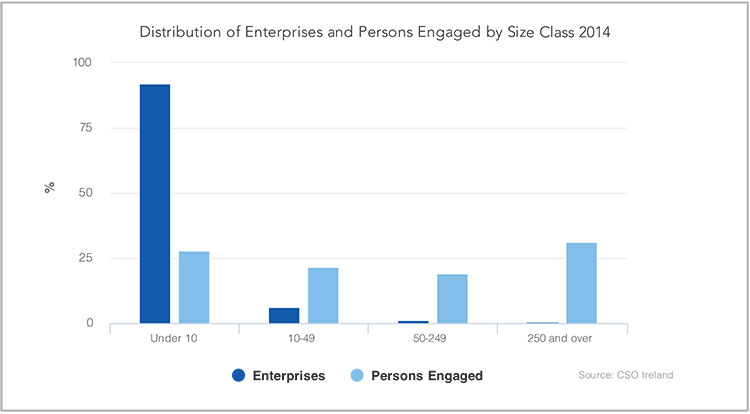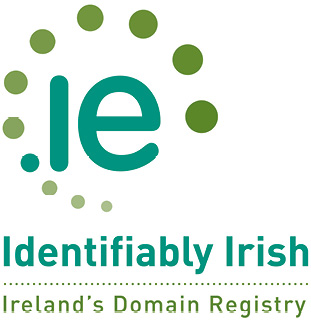Countering e-commerce complacency


When it comes to European e-commerce, Ireland is far from number one. David Curtin, Chief Executive of the IE Domain Registry writes.
The latest edition of the European Commission’s Digital Economy and Society Index (DESI) paints a rosy picture of Ireland’s e-commerce sector. So rosy, in fact, that we are ranked number one in Europe for buying and selling online by a significant margin, ahead of the UK, Germany and France.
While this was quickly acclaimed, on closer inspection, using the DESI as a metric for Ireland’s e-commerce health, especially for SMEs, is misleading.
The DESI classifies ‘small enterprises’ as businesses that have between 10 and 49 employees. This classification therefore excludes the ‘micro-enterprises’ (businesses that employ fewer than 10 people) that make up more than
92 per cent* of the Irish economy.
IEDR’s dot ie Digital Health Index tells a very different story. Twice a year, we survey 500 Irish SMEs, the vast majority of them with fewer than 10 employees, to assess the condition of Ireland’s digital economy. We check to see whether they have a website, a social media page and can engage in e-commerce, among other things.
The most recent survey, published in November 2016, showed that less than two thirds of Irish SMEs have a website; of these SMEs, less than a third (32 per cent) can take sales orders on their websites, while only 28 per cent can actually process payments online. Indeed, one in five SMEs still have no online presence whatsoever, neither website nor social media page.

Our share of the European e-commerce market is valued at more than €9 billion, and as consumers, we are spending more online than ever before. According to the Digital Health Index, 41 per cent of Irish consumer survey respondents have increased their online spend in the last two years. This is a glaring missed opportunity for our SMEs, especially as 85 per cent of surveyed consumers say they would prefer to spend on an Irish website.
In a post-Brexit Ireland, where economic diversification and preparedness is so essential, e-commerce must be a high priority for all our businesses, especially our smallest – and our most vulnerable – micro-enterprises. By selling online, Irish SMEs have access to a virtually borderless global marketplace that stays open 24 hours a day, 365 days a year. Whereas an offline business owner in Letterkenny might depend exclusively on local footfall for business, his online competitor in the same town can make money, even while they sleep, as internet shoppers in London and Lisbon log on to browse and buy their products.
Retail Ireland’s new report, Shaping the Future of Irish Retail, which sets out a comprehensive plan for the sector up to 2020, is welcome in this regard. It highlights the importance of the ‘omni-channel’ approach to retail, including increased use of e-commerce and embracing new technologies, as greater numbers of Irish consumers turn to online shopping. This must be a focus in the years ahead, but there are barriers to overcome.
At IEDR, we are in regular contact with SMEs through initiatives like OPTIMISE and at events such as Ireland’s Internet Day. Anecdotally, it seems that for many entrepreneurs, particularly in rural parts of the country, selling online is either too time-consuming or too complicated. To change this, we must concentrate our efforts by building up two key pillars.
The first pillar, mentorship, means more funding opportunities and shoulder-to-shoulder guidance for SMEs. The Government’s existing e-commerce initiative, the Trading Online Voucher Scheme, is useful, but the surprisingly low uptake indicates that SMEs have issues with its conditional grant of up to €2,500, and that the scheme may be too limited in scope. The hard-working, but under-resourced, Local Enterprise Offices and Chambers of Commerce must provide deeper, long-term training bespoke for each county and each industry, and give extra attention to SMEs going online for the first time. The recent extension of the Government’s Digital Skills for Citizens Grant Scheme, to include SMEs with less than 10 employees, is a very welcome development.
The second pillar is infrastructure. While rural broadband connectivity is improving, for many SMEs actually connecting to the internet remains a problem. The Digital Health Index showed that for one in six offline SMEs, a poor connection was the main issue preventing them from going online. The National Broadband Plan must be rolled out as quickly as possible, and in ways that ensure no SME goes without.
Rural development has long been on this nation’s agenda, and it is precisely the online activation of rural SMEs that will open up larger markets to the least developed parts of the country, spur on revenue generation, create employment and help shield us from the fallout of Brexit. While the Commission’s DESI stats are a useful guide, considering the huge importance of micro-enterprises to Ireland, they are not an accurate measurement of our overall e-commerce success. At a time of such profound economic and political uncertainty, the last thing Irish businesses and policymakers can afford to do is grow complacent.
David Curtin is the Chief Executive of the IE Domain Registry (IEDR), the company that manages Ireland’s country domain name.
For more information please visit www.iedr.ie.






